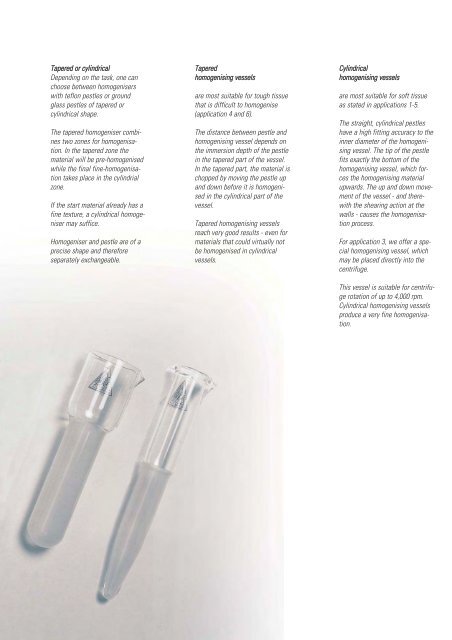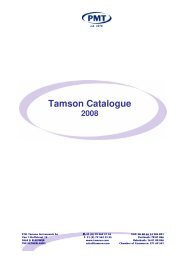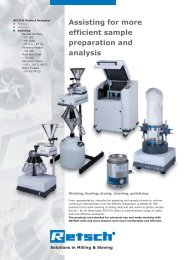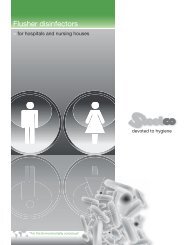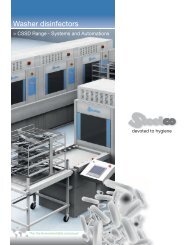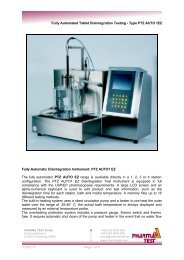Create successful ePaper yourself
Turn your PDF publications into a flip-book with our unique Google optimized e-Paper software.
Tapered or cylindrical<br />
Depending on the task, one can<br />
choose between homogenisers<br />
with teflon pestles or ground<br />
glass pestles of tapered or<br />
cylindrical shape.<br />
The tapered homogeniser combines<br />
two zones for homogenisation.<br />
In the tapered zone the<br />
material will be pre-homogenised<br />
while the final fine-homogenisation<br />
takes place in the cylindrial<br />
zone.<br />
If the start material already has a<br />
fine texture, a cylindrical homogeniser<br />
may suffice.<br />
Homogeniser <strong>and</strong> pestle are of a<br />
precise shape <strong>and</strong> therefore<br />
separately exchangeable.<br />
Tapered<br />
homogenising vessels<br />
are most suitable for tough tissue<br />
that is difficult to homogenise<br />
(application 4 <strong>and</strong> 6).<br />
The distance between pestle <strong>and</strong><br />
homogenising vessel depends on<br />
the immersion depth of the pestle<br />
in the tapered part of the vessel.<br />
In the tapered part, the material is<br />
chopped by moving the pestle up<br />
<strong>and</strong> down before it is homogenised<br />
in the cylindrical part of the<br />
vessel.<br />
Tapered homogenising vessels<br />
reach very good results - even for<br />
materials that could virtually not<br />
be homogenised in cylindrical<br />
vessels.<br />
Cylindrical<br />
homogenising vessels<br />
are most suitable for soft tissue<br />
as stated in applications 1-5.<br />
The straight, cylindrical pestles<br />
have a high fitting accuracy to the<br />
inner diameter of the homogenising<br />
vessel. The tip of the pestle<br />
fits exactly the bottom of the<br />
homogenising vessel, which forces<br />
the homogenising material<br />
upwards. The up <strong>and</strong> down movement<br />
of the vessel - <strong>and</strong> therewith<br />
the shearing action at the<br />
walls - causes the homogenisation<br />
process.<br />
For application 3, we offer a special<br />
homogenising vessel, which<br />
may be placed directly into the<br />
centrifuge.<br />
This vessel is suitable for centrifuge<br />
rotation of up to 4,000 rpm.<br />
Cylindrical homogenising vessels<br />
produce a very fine homogenisation.


